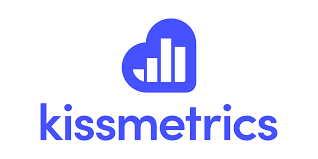In a world teeming with data, choosing the right analytics tool can feel like searching for a needle in a digital haystack. Enter Looker and Kissmetrics, two giants in the analytics arena, each boasting its own set of powerful features designed to transform data into actionable insights. But here’s the rub: which one is the right tool for you? This isn’t just about choosing a software; it’s about picking a partner that aligns with your marketing objectives, speaks your data language, and ultimately, helps you carve a path to success. So, let’s dive into the heart of the matter and decode the differences between Looker and Kissmetrics, starting with their approach to data analysis and reporting.
| Looker | Kissmetrics |
|---|---|
 |  |
| G2 Score – 4.4 out of 5 stars | G2 Score – 4.1 out of 5 stars |
| TrustRadius Score – 7.9 out of 10 | TrustRadius Score – 9.6 out of 10 |
Data Analysis and Reporting: The Heartbeat of Your Marketing Strategies
Looker: A Deeper Dive into Data
Looker stands out with its unique approach to data analysis, emphasizing customizable data exploration. It’s like being given a high-powered submarine to delve into the ocean of your data. With Looker, you can navigate through complex data sets, thanks to its powerful modeling language, LookML. This tool enables you to define dimensions, aggregates, and calculations, essentially allowing you to tailor the data analysis to your specific needs.
The beauty of Looker lies in its ability to provide real-time insights. Imagine making decisions based on data that’s as fresh as your morning coffee. That’s the kind of immediacy Looker brings to the table. Moreover, its integration capabilities mean you can pull in data from a multitude of sources, offering a holistic view of your marketing landscape.
When it comes to reporting, Looker shines with its highly customizable dashboards. These aren’t just any dashboards; they’re canvases where you can paint a picture of your data story. You can create, share, and even schedule reports, ensuring that the right eyes see the right data at the right time. It’s about making data accessible and actionable for everyone in your organization, from analysts to the C-suite.
Kissmetrics: Focusing on the Customer Journey
Kissmetrics, on the other hand, takes a slightly different route. Its strength lies in unraveling the customer journey, offering a clear view of how users interact with your product or website. If Looker gives you a submarine to explore the depths, Kissmetrics offers a map to trace the footsteps of your customers. It’s all about understanding the “who” behind the actions on your site.
Kissmetrics excels in segmenting users and tracking their behavior over time. This allows you to pinpoint exactly where you’re losing potential customers and where you’re winning them over. The platform’s approach to reporting is heavily focused on funnel analysis, cohort analysis, and customer behavior, providing insights that are not just numbers, but stories of your customer’s journey.
The reporting tools in Kissmetrics are designed to be user-friendly, ensuring that you can quickly glean insights without wading through complex data models. Its emphasis on visualizing the customer journey makes it easier for teams to make data-driven decisions that enhance customer engagement and retention.
The Deciding Factor
Choosing between Looker and Kissmetrics comes down to what you value more: the depth of data exploration and customization or a focused analysis of the customer journey. Looker offers a powerful, flexible platform for those who want to dive deep into their data and customize their analytics to fit intricate business needs. Kissmetrics, however, is the go-to for businesses prioritizing a clear understanding of their customer’s behavior and optimizing their marketing strategies accordingly.
Integration Capabilities: Expanding Your Digital Ecosystem
Looker: The Power of Connectivity
Looker stands tall with its robust integration capabilities, designed to seamlessly blend into your existing tech stack. Its ability to integrate with a vast array of databases and software platforms is akin to having a universal adapter in the world of data analytics. Whether you’re pulling data from SQL databases, Google BigQuery, Amazon Redshift, or Snowflake, Looker makes it possible. This seamless connectivity ensures that your data is not siloed but rather a cohesive part of your overall analytics strategy.
Moreover, Looker’s API extends its versatility, allowing for custom integrations that can power apps, automate workflows, and even embed analytics directly into customer-facing websites. This level of integration empowers businesses to not just analyze data, but to operationalize it across all facets of their operations, enhancing decision-making at every turn.
Kissmetrics: Streamlined and Marketing-Focused
Kissmetrics, while offering a more focused scope of integration, excels in creating a streamlined ecosystem specifically tailored for marketing analytics. It integrates effortlessly with popular marketing tools and platforms, such as email marketing services, advertising platforms, and CRM systems. This targeted approach ensures that you can easily track and analyze customer interactions across various channels, all within a unified platform.
The strength of Kissmetrics lies in its ability to provide deep insights into customer behavior directly from the tools you use daily. This eliminates the need for complex data migrations or manual consolidations, making it easier for marketing teams to act on insights without the need for extensive IT support.
User Interface: Navigating Your Data with Ease
Looker: Customizable and Comprehensive
The user interface of Looker is a testament to its commitment to customization and deep data exploration. With a sleek, modern design, it offers a highly customizable dashboard that can be tailored to display the most relevant data for your business. The platform’s emphasis on LookML, however, means that there’s a steeper learning curve, especially for users not familiar with SQL or other database languages. But for those willing to climb this curve, the payoff is a highly powerful and personalized data analytics experience.
Kissmetrics: Intuitive and User-Friendly
Kissmetrics shines with its intuitive, user-friendly interface designed with marketers in mind. It prioritizes simplicity and clarity, making it easy for users to track customer journeys, analyze conversion funnels, and understand behavioral trends without deep technical knowledge. The platform’s visual focus, with its easy-to-understand graphs and charts, ensures that actionable insights are just a few clicks away, making it an excellent choice for teams that need to move quickly and decisively.
The Right Tool for the Right Team
The choice between Looker and Kissmetrics extends beyond just features; it’s about how well the tool integrates into your existing systems and how easily your team can leverage its capabilities. Looker offers a powerful, customizable solution that fits well with a technologically adept team and a complex data ecosystem. In contrast, Kissmetrics provides a streamlined, user-friendly platform perfect for marketing teams looking to dive deep into customer analytics without the need for extensive technical resources.
Pricing and Scalability: Tailoring to Your Growth
| Looker | Looker’s pricing is not publicly listed. Interested users need to contact Google Cloud sales for a custom quote. |
| Kissmetrics | As of the latest information, Kissmetrics appears to have been absorbed by Neil Patel Digital, and specific pricing for Kissmetrics services is not listed. It’s advisable to contact them directly for details. |
Looker: Custom Pricing for Custom Needs
Looker operates on a custom pricing model, which means that the cost is tailored to the specific needs and scale of your business. This approach allows for a high degree of flexibility and ensures that you’re not paying for more than what you use. However, it also means that understanding the potential investment requires a conversation with their sales team to get a quote based on your data usage, number of users, and specific feature requirements.
The scalable architecture of Looker supports businesses as they grow, capable of handling increasing volumes of data and more complex analytics needs. This makes it an attractive option for businesses projecting rapid growth or those with already large and complex datasets who need a powerful analytics engine that can grow with them.
Kissmetrics: Transparent, Scale-Based Pricing
In contrast, Kissmetrics offers transparent, tiered pricing based on the scale of your usage, particularly the number of events tracked and the features you need access to. This straightforward approach makes it easier for small to medium-sized businesses to understand and anticipate costs as they scale. Packages often start with a base plan suitable for smaller operations, with the option to scale up as your needs grow in complexity and volume.
Kissmetrics is designed to scale with your business, offering plans that accommodate increasing data needs and more sophisticated analytics as your customer base grows and your marketing strategies become more complex.
Customer Support: Ensuring Your Success
Looker: Comprehensive Support for Complex Needs
Looker provides comprehensive support tailored to the complexity of its platform. This includes access to a dedicated support team for enterprise-level customers, as well as extensive documentation, training materials, and a community forum for all users. The level of support can vary based on the pricing plan, with premium plans offering more direct and personalized assistance. This ensures that businesses can maximize their use of Looker’s extensive features and capabilities, even as their data analytics needs evolve.
Kissmetrics: Focused Support for Marketing Teams
Kissmetrics offers focused support designed to meet the needs of marketing teams, including live chat and email support, as well as a knowledge base with articles, guides, and tutorials. The aim is to enable users to quickly resolve issues and get the most out of the platform’s features focused on understanding and optimizing the customer journey. While the support might not be as customized as Looker’s, it’s tailored to the specific needs of Kissmetrics’ user base, ensuring that marketers can effectively leverage customer insights to drive growth.
Aligning Tool with Strategy
When choosing between Looker and Kissmetrics, consider not only the current scale and complexity of your data analytics needs but also how you expect them to evolve. Looker offers a powerful, customizable solution ideal for businesses with complex data environments and a need for deep data customization. Kissmetrics, with its clear pricing and user-friendly interface, serves marketing teams looking for actionable insights into customer behavior and conversion optimization.
Both platforms offer valuable support to ensure your success, but the nature of that support reflects the distinct focus of each tool. Your decision should align with your strategic objectives, anticipated growth trajectory, and the type of support your team needs to make the most of your chosen analytics platform.

Related: Check out our free SEO suite

Data Privacy and Compliance: Navigating the Legal Landscape
Looker: Robust and Secure
Looker, as part of Google Cloud, adheres to the stringent security and privacy standards expected from its parent company. It complies with major global data protection regulations, including GDPR in Europe and CCPA in California, ensuring that businesses using Looker can manage and protect their data according to these laws. Looker provides features like data encryption at rest and in transit, along with robust access controls and audit logs, making it easier for businesses to secure their data and monitor access and usage.
The platform’s commitment to security is further underscored by its adherence to industry standards and certifications, including ISO/IEC 27001, SOC 2 Type II, and more, which demonstrates its commitment to maintaining a high level of security management.
Kissmetrics: Privacy-Centric and Compliant
Kissmetrics has also positioned itself as a tool that values user privacy and data security, offering features designed to help businesses comply with GDPR, CCPA, and other privacy laws. This includes providing users with the ability to easily opt out of tracking, deleting user data upon request, and ensuring data is handled in a manner that respects user privacy.
Kissmetrics emphasizes transparency in how data is collected, stored, and used, aiming to build trust between businesses and their customers. The platform’s approach to data privacy and security is designed to ensure that businesses can not only comply with legal requirements but also reassure their customers that their data is being handled responsibly.
The Bottom Line: Aligning with Your Data Ethics
In choosing between Looker and Kissmetrics, it’s essential to consider which platform aligns better with your organization’s stance on data privacy and security. Both platforms offer robust features designed to help you comply with current data protection laws, but the extent and focus of these features might align more closely with your specific needs depending on the nature of your data, your industry, and the regions in which you operate.
Looker, with its Google Cloud backbone, offers a broad and deeply integrated set of security features that may be especially appealing for enterprises with complex data landscapes and stringent security requirements. On the other hand, Kissmetrics provides a more focused set of privacy features that cater specifically to the needs of marketing teams looking to balance deep customer insights with respect for user privacy.
Real-Time Data Processing: The Speed of Insight
Looker: Leveraging Big Data in Real Time
Looker’s integration with Google Cloud’s BigQuery allows for the processing of massive datasets in real-time. This means that users can access up-to-the-minute data insights, making it possible to react swiftly to trends, changes in user behavior, or the effectiveness of marketing campaigns. The platform’s architecture is designed to handle complex queries quickly, even across vast datasets, ensuring that data analysts and business users can make decisions based on the latest information.
Furthermore, Looker’s real-time data capabilities extend to its dashboards and reports, which can be set to refresh at near-real-time intervals. This ensures that all stakeholders, from marketing teams to executives, have access to current data, enabling a dynamic and responsive approach to business strategy.
Kissmetrics: Focused Real-Time Insights for Marketing
While Kissmetrics might not match the sheer data processing power of Looker and BigQuery, it offers real-time data insights tailored to marketing needs. This includes the ability to track immediate reactions to marketing campaigns, website changes, or new product launches. Kissmetrics enables businesses to see how users are interacting with their digital assets in real time, providing valuable insights into customer behavior and campaign performance.
The platform’s real-time capabilities are particularly beneficial for A/B testing, allowing marketers to quickly gauge the impact of different variables on user behavior and conversion rates. This immediacy can significantly enhance the agility of marketing strategies, enabling rapid adjustments to maximize effectiveness.
Providing Actionable Insights: Turning Data into Strategy
Looker: Data-Driven Decision Making at Scale
Looker’s strength lies in its ability to not only present data but to transform it into actionable insights through its powerful analytics engine. The platform’s advanced data modeling capabilities, combined with its customizable dashboards and reports, allow users to drill down into specific metrics and trends that can inform strategic decisions. Looker’s LookML modeling language enables the creation of sophisticated data models that can uncover insights across various business areas, from customer behavior to financial performance.
Moreover, Looker’s integration capabilities mean that these insights can be easily shared and acted upon across the entire organization, fostering a data-driven culture that leverages insights for strategic advantage.
Kissmetrics: Actionable Marketing Insights
Kissmetrics excels in providing actionable insights specifically tailored to optimizing marketing efforts and improving customer engagement and retention. The platform’s analytics focus on the customer journey, segmenting users based on behavior and engagement, which can inform targeted marketing strategies, product improvements, and customer experience enhancements.
Kissmetrics’ reports are designed to be immediately actionable, offering clear guidance on what works and what doesn’t in marketing campaigns and user engagement strategies. This focus on actionable marketing insights makes Kissmetrics a powerful tool for marketers looking to have a direct impact on conversion rates, customer retention, and overall business growth.
Matching Capabilities with Needs
Both Looker and Kissmetrics offer powerful capabilities, but their strengths cater to different needs. Looker is a robust choice for businesses that require real-time processing of vast datasets and the ability to model and analyze data at scale. Its capabilities are well-suited for organizations looking for a comprehensive, enterprise-level data analytics solution that provides insights across all areas of the business.
Kissmetrics, with its focus on real-time insights and actionable marketing intelligence, is ideal for marketing teams and businesses focused on optimizing the customer journey and engagement. Its tools are designed to quickly translate data into strategic marketing actions, making it a strong option for businesses prioritizing agility and effectiveness in their marketing efforts.
Customization and Flexibility: Tailoring Tools to Your Needs
Looker: High Degree of Customization
Looker offers an exceptionally high degree of customization through its proprietary modeling language, LookML. This powerful language allows users to define and model their data in highly specific ways, creating custom dimensions, measures, and aggregations that reflect the unique aspects of their business. With LookML, businesses can tailor Looker to suit their specific data structures and analysis needs, making it a highly flexible tool for organizations with complex data ecosystems or unique reporting requirements.
Moreover, Looker’s dashboard and reporting tools are highly customizable, enabling users to create bespoke visualizations that cater to the specific needs and preferences of different stakeholders within the organization. This level of customization extends to embedding options, allowing businesses to integrate Looker reports and dashboards directly into their applications or websites, providing tailored data insights in the context most relevant to users.
Kissmetrics: Flexibility for Marketers
While Kissmetrics may not offer the same depth of customization as Looker in terms of data modeling, it provides significant flexibility in how data is segmented, analyzed, and reported, with a focus on marketing insights. Kissmetrics allows marketers to easily segment users based on a wide range of behaviors and attributes, creating custom views of the customer journey that can inform targeted marketing strategies.
The platform also offers flexibility in creating and customizing reports and dashboards, with a user-friendly interface that makes it accessible to users regardless of their technical expertise. This ensures that marketers can quickly and easily tailor Kissmetrics to their needs, focusing on the insights that matter most to their strategies and objectives.
The Impact of Customization and Flexibility on Your Business
The level of customization and flexibility offered by an analytics platform can have a significant impact on its effectiveness for your business. A highly customizable tool like Looker can provide deep insights tailored to the intricate needs of your organization, offering the potential for significant strategic advantage. However, this comes with the requirement for technical expertise in data modeling and analysis, making it more suited to organizations with dedicated data teams.
On the other hand, a platform like Kissmetrics offers flexibility in a more accessible format, focusing on the needs of marketers and providing insights that can directly inform marketing strategies. This can be particularly valuable for businesses looking for quick, actionable insights to drive marketing performance, without the need for deep technical customization.
Aligning Platform Capabilities with Business Needs
In choosing between Looker and Kissmetrics, businesses should consider their specific needs for customization and flexibility, balanced against their capacity to leverage these features. Looker’s extensive customization options make it a powerful tool for businesses with complex data needs and the resources to exploit them fully. In contrast, Kissmetrics provides valuable flexibility for marketing teams looking for actionable insights, without the need for deep technical customization.
Conclusion
In the quest to harness the power of marketing analytics, Looker and Kissmetrics emerge as formidable tools, each with its own strengths and nuances. Looker offers unparalleled customization and depth, ideal for organizations with complex data ecosystems and the technical prowess to delve deep into bespoke analytics. Its ability to mold around a business’s unique requirements makes it a powerhouse for data-driven decision-making across all facets of an organization. On the flip side, Kissmetrics provides a more focused lens on marketing analytics, offering actionable insights with ease and agility.
Its user-friendly interface and emphasis on customer journey analytics make it a go-to for marketers aiming to swiftly decode customer behaviors and refine strategies for better engagement and conversion. Choosing between Looker and Kissmetrics hinges on identifying your core analytics needs, the technical capabilities of your team, and the strategic goals of your marketing endeavors. Both platforms offer pathways to insights, but the best choice aligns seamlessly with your business’s pulse—be it through the intricate customization of Looker or the marketing precision of Kissmetrics.
Read Next:
- The Link Between SEO Budget and Long-Term ROI for StartupsROI-Driven Startup SEO Strategies: A Budgeting GuideFactors Influencing Startup SEO Budget AllocationAllocating Resources: Creating a Comprehensive SEO Budget Plan31+ Top Social Media Management tools Compared! (2023)






















Comments are closed.